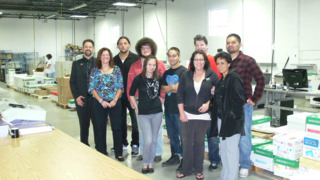Grow Your Own
Get creative to find new talent.

Listen to the audio version of this article
University of Wisconsin–Stout, nestled in Wisconsin’s picturesque Northwoods, recently announced it is suspending admissions to its Graphic Communications program. I’ve heard rumors that Ferris State University in Michigan and Ball State University in Indiana have similar plans. I’d be happy to discover that these rumors are unfounded, but I fear the worst.
In the immediate vicinity of my printing plant, the local high school, the vocational school and the local community college have all eliminated their printing programs.
As veteran graphic arts educator Dr. Shaun Dudek has observed based on her research, once a program closes, it never re-opens.
Politicians, boards of education, and of regents, and the administrators who nominally report to them don’t see print as a glamorous career path. What a shame.
Students pursuing careers in print are much more likely to land successful positions upon graduation than their counterparts who’ve majored in such bright shiny objects as web design, gaming or computer science. Unfortunately, I’m preaching to the choir. In my experience, educational institutions have little interest in reversing the trend of phasing out graphic arts programs. What to do?
Vocally and actively support graphic arts education in your area at the secondary and college levels. I also encourage supporting the Graphic Communication Education Association. They are supporting you! A bronze level membership is only $100 per year.
All that said, here in the 21st century you are largely on your own. You can no longer count on a steady stream of applicants from trade schools and universities. The solution? You must cultivate your own talent.
Graphic arts programs may be disappearing from vocational schools, but other programs, such as auto mechanics, are alive and well. These classes are populated by young people interested in the workings of highly complex microprocessor-controlled electro-mechanical devices, a definition which also applies to most of the equipment in today’s print production environment.
Phrase job postings in such a way as to attract talent from non-graphic segments of manufacturing. Be prepared to hire production-inclined individuals and then train them in print-specific disciplines, such as color management.
Remember that your bindery (probably your largest department) doesn’t require color knowledge, and is really just a big machine shop that converts paper instead of metal.
Take a look in your own shop. How about that guy you hired to clean the restrooms who has no print experience but a terrific work ethic? Give him a shot. Invest some time in training him. See if he wants to improve his lot.
What about that temporary hire working in shipping who has been futilely seeking a position suited to his college major? He has already seen how busy you are and what a great place your firm is. He may be ready to reconsider his career path.
Don’t be put off by superficial appearances. Do you have entry-level workers who are not proficient in English? Once again, look for the work ethic. English can be taught, and such tutoring is usually available locally at no cost to you.
Don’t pigeonhole your people. Your folder operator already has an encyclopedic knowledge of layouts and a strong sense of urgency. Perhaps it is time to move him into estimating or customer service.
Not everybody wants to advance, but many do. This is your chance to turn the shortage of skilled workers to your advantage by building a team of home-grown talent.
